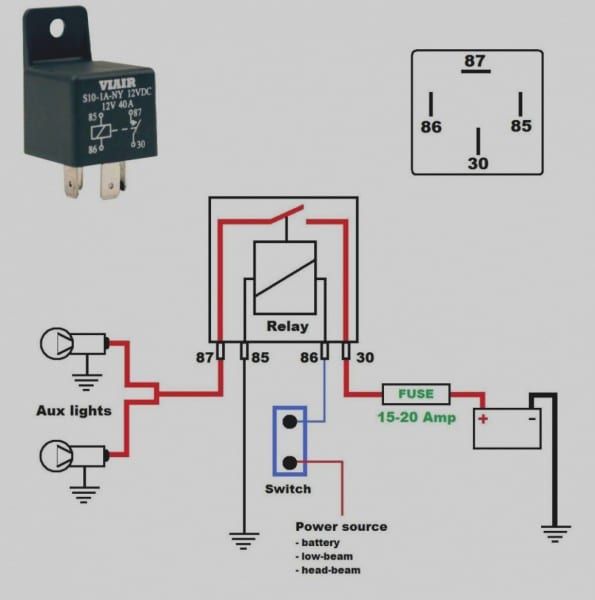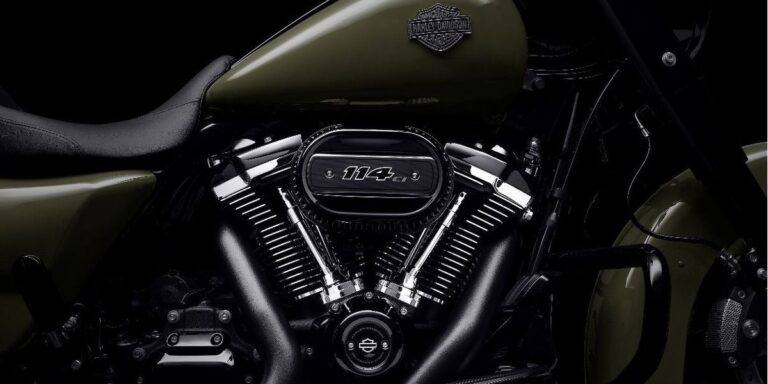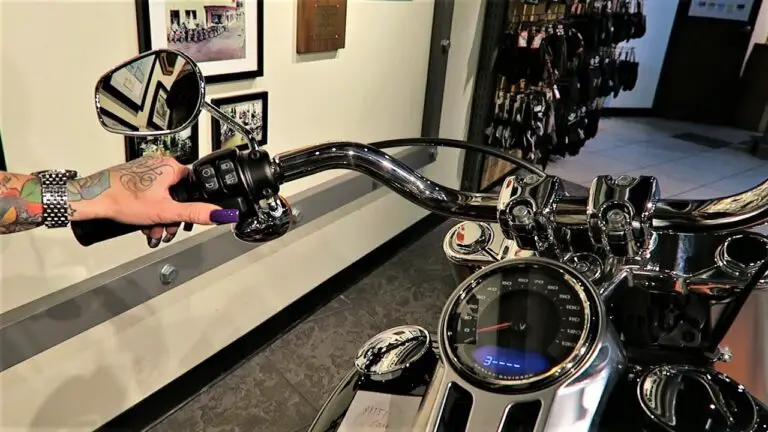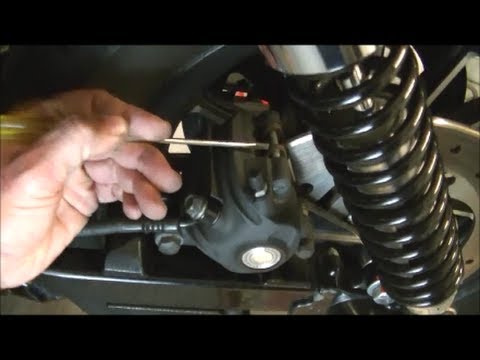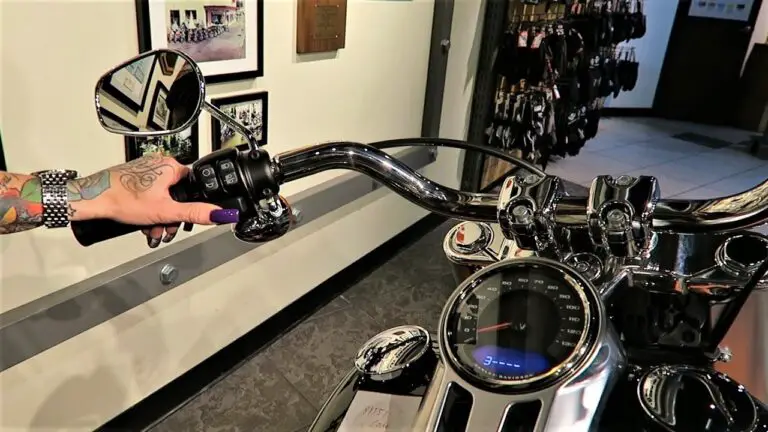The primary difference between Dyna and Softail models is the design of their suspension systems. Dynas typically have exposed rear shock absorbers, while Softails have hidden suspension to mimic a hardtail look.
Harley-Davidson enthusiasts often debate the nuances of their beloved bikes, and two such models that stir conversation are the Dyna and the Softail. Introduced in the 1980s, the Dyna line featured a traditional frame with a rubber-mounted engine for reduced vibration and visible rear shocks for a classic aesthetic.
The Softail, on the other hand, offered an innovative design which cleverly concealed its rear shocks for a vintage hardtail appearance without sacrificing comfort. This distinction catered to riders’ differing needs and styles: the Dyna’s raw, performance-driven ride versus the Softail’s smooth cruising experience. Enthusiasts further distinguish between the two based on handling, comfort, and the potential for customization, making each model an icon in its own right within the motorcycle community.

Credit: www.facebook.com
Introduction To Harley-davidson’s Dyna And Softail Models
The Harley-Davidson brand dates back to 1903. It has crafted iconic motorcycles. Among them are the Dyna and Softail series. The Dyna line was introduced in 1991. It became known for its performance and distinctive frame. This series features rubber engine mounts. These reduce vibrations. The Softail, on the other hand, made its debut in 1984. Its signature design mimics the clean lines of vintage motorcycles. Yet, it includes a hidden suspension system. Enthusiasts often praise its classic aesthetic and riding comfort.
Design Philosophy And Aesthetics
Design Philosophy and Aesthetics shape the distinct styles of Dyna and Softail motorcycles. Dyna’s design appeals with its classic profile, boasting a traditional, raw, and muscular silhouette. It reflects a retro vibe, linking riders to the rich heritage of motorcycling.
The Softail, on the other hand, showcases a modern twist in motorcycle design. Its innovative hidden suspension gives a clean and streamlined appearance. The Softail’s look deceives the eye, as it appears to be a hardtail while offering the comfort of rear suspension.
| Dyna | Softail |
|---|---|
| Embraces a classic look | Sleek design with concealed shocks |
| Visible shocks and twin rear shocks | Looks like a vintage hardtail bike |
| Connects to motorcycling tradition | Modern tech gives a smooth ride |
Technical Specifications And Performance
Dyna and Softail models showcase distinct engine configurations. Dyna often features the iconic Twin Cam engine, renowned for its raw power and tradition. Softail models, however, sport the newer, smoother Milwaukee-Eight engine. This offers a more refined experience with reduced vibrations.
Riders experience different handling characteristics between these two chassis. The Dyna is recognized for its raw and traditional ride, whereas Softail, with its hidden rear shocks, affords an improved ride quality and handling sharpness.
| Dyna | Softail |
|---|---|
| Traditional frame design | Modern frame engineering |
| Standard front forks | Advanced front suspension tech |
| Rear twin shocks visible | Rear monoshock, under seat |
Rider Experience And Comfort
Dyna and Softail motorcycles both offer unique rider experiences. Ergonomics and riding position play crucial roles in the feel of these bikes. Dynas typically feature a more upright stance, allowing for an agile ride. Softails, with their low-slung design, provide greater comfort on long rides.
The seat design influences passenger comfort significantly. Softail seats are plush and designed for long stretches on the road. In contrast, Dyna seats are firmer, catering to riders who prefer support over softness.
Vibration and sound characteristics differ between these models. Dynas showcase a more raw and mechanical feel, due to their rubber-mounted engines. Softails feature counterbalanced engines, which result in a smoother and quieter ride.
Customization And Aftermarket Support
Customization Trends for Dyna and Softail bikes differ greatly. Dyna riders often prefer a raw, classic look, focusing on performance upgrades. Softail enthusiasts lean towards comfort and style, seeking sleek lines and advanced features.
Both models enjoy a robust selection of aftermarket components and kits, enabling riders to tailor their bikes to personal tastes. This includes engine enhancements, new exhaust systems, upgraded suspension parts, and custom paint jobs.
The Dyna and Softail series significantly influence biker culture. Each has cultivated a distinct fan base, with clubs and events dedicated to customizing these models.
Market Position And Consumer Choice
Dyna and Softail models cater to distinct buyer groups. The Dyna’s rugged features attract a demographic seeking traditional Harley-Davidson character and a rawer riding experience. Softail, with classic lines and modern engineering, appeals to those wanting a blend of heritage and comfort. Considering resale value, Softails generally maintain their worth better due to their timeless appeal and lower production numbers. Ownership costs, encompassing maintenance and upgrades, vary between the two, with Dynas often being less costly to customize. Buyers must assess their budget, riding style, and aesthetic preference. Test rides and research can aid in a well-informed decision between Dyna and Softail.
Conclusion: The Dyna And Softail Legacy
The Dyna and Softail models stand as iconic motorcycle options from Harley-Davidson. Bikers often debate their preferences, citing a unique feel and performance. The Dyna line, known for its traditional frame and twin shocks, offers a classic ride. Softail models, with hidden rear shocks, provide a smooth aesthetic and ride.
Harley-Davidson values innovation while respecting its history. Thus, the company integrates modern technology with these beloved lines. New Softail designs, which began including characteristics from the Dyna, signify the evolution of these series. This blending of features aims to capture the best of both worlds.
Rider experiences with Dyna and Softail bikes bring these differences to life. Enthusiasts share stories of long rides, customizations, and the feel of the road. Each rider’s tale adds to the rich legacy of these Harley-Davidson models.

Credit: m.youtube.com

Credit: twitter.com
Frequently Asked Questions Of Difference Between Dyna And Softail
What Makes A Harley Dyna Different?
The Harley Dyna stands out for its rubber-mounted engine, which reduces vibration. Its chassis is also distinct, offering a unique balance of agility and stability. This model features a big-twin engine paired with a traditional cruiser design.
What Makes A Harley A Softail?
A Harley Softail features a hidden rear suspension system, resembling a hardtail motorcycle while providing a smoother ride. Its design allows classic styling paired with modern comfort.
Why Did Harley Drop The Dyna?
Harley-Davidson discontinued the Dyna line in 2017 to streamline production and integrate the Dyna’s popular traits into the updated Softail models. This strategic move aimed to enhance overall performance and modernize the motorcycle lineup.
Is A Street Bob A Dyna Or Softail?
The Harley-Davidson Street Bob was originally part of the Dyna lineup until 2018, when it transitioned to the Softail family.
Conclusion
Understanding the distinctions between a Dyna and a Softail chassis is vital for any Harley enthusiast. Both offer unique riding experiences tailored to individual preferences. Whether you value the raw, distinctive pulse of a Dyna or the sleek, concealed suspension of a Softail, your choice will shape your journey.
Embrace the ride that reflects your style and hit the road with confidence.
